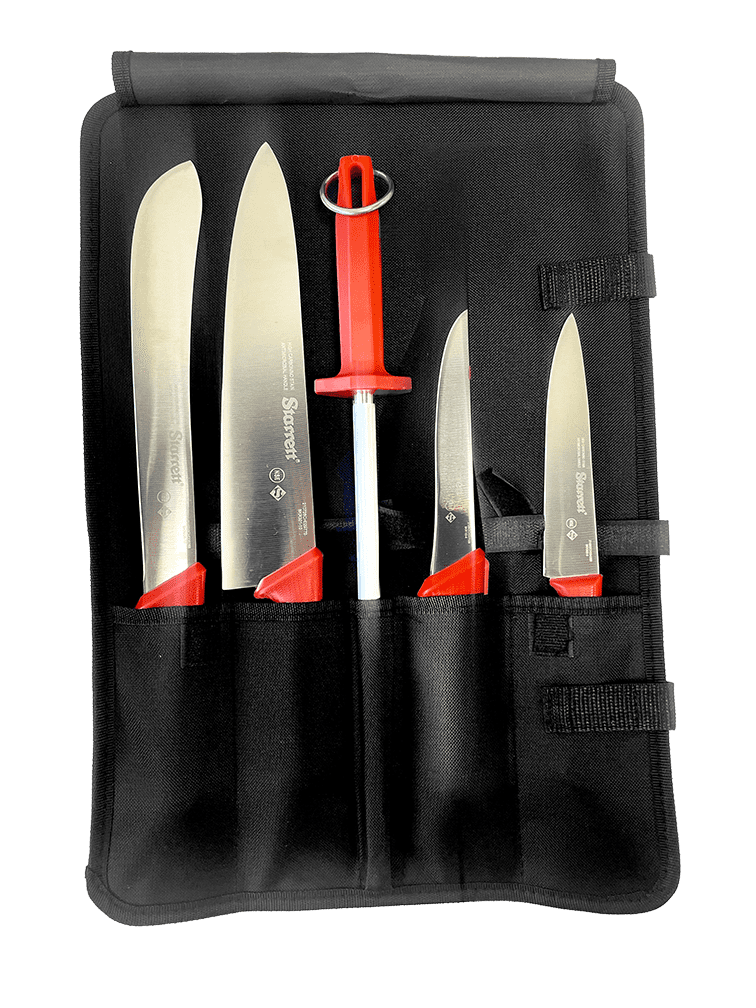Meat Processing At Home
The basics of meat processing at home
Meat processing at home, or home butchery, is a rewarding skill that fills the fridge and freezer with all the cuts of meat you enjoy the most. If you’re new to meat processing, it’s important to learn the basics.
These include:
- What equipment you need to process meat and how to use it.
- Processing at the right temperatures.
- Preventing food contamination.
- Preserving flavour without using additives.
Essential equipment:
- A butcher block or benchtop: These don’t harbour bacteria, they prevent cross-contamination and are easy to clean and sterilise between uses.
- Butcher knives: These knives are designed to cut meat and make the job much easier than standard kitchen knives.
- A butcher saw: You’ll need a saw for larger cuts of meat with bones.
- Knife sharpeners and whetstones: You’ll need to keep your knives razor-sharp at all times when you process meat.
- Butcher accessories such as a stainless steel mesh glove for safety. Sharp knives cut deep!
- Food-grade containers for storage. We recommend investing in vacuum sealers, which preserve meat safely and for longer than other storage methods.
Safe working temperatures
Refrigeration is your friend when working with meat. When meat rises to room temperature after two or more hours, it allows bacteria to take hold and grow rapidly. This is a significant safety risk if contaminants include E. coli, Salmonella, or Listeria. As you process meat, you should refrigerate it immediately to prevent contamination.
Tips for preventing contamination:
- Keep different types of meat separate from one another.
- Work with cold meat where possible, ideally 4 degrees Celsius. Chilling meat also makes it easier to cut.
- Wash your hands and sterilise your equipment each time you handle different types of meat.
- Seal, store, refrigerate or freeze meat immediately after processing your cuts.
- When freezing meat, use pork within six months, poultry within nine months, and beef and lamb within a year for maximum freshness. Your meat will retain its freshness for up to five times longer when you vacuum seal each cut before freezing. Label storage containers with a best-by date.
Safety tips when cutting meat
- Butcher knives are both sharp and designed to cut meat. You don’t want to include yourself in the processing list. Invest in a stainless steel mesh glove to protect your non-cutting hand and save yourself from a nasty injury if the knife slips.
- Find out how to break down each carcass before you start. Work slowly until you are confident you know what you’re doing, and always cut away from your body. If you can’t process meat quickly, don’t rush or allow meat to sit at room temperature for more than two hours. Simply return it to the refrigerator until you’re ready to work on it again.
- Maintain your knives and equipment, giving special attention to keeping your knives razor-sharp. Dull knives don’t cut as efficiently, requiring you to use more force. This increases the chance of the knife slipping.
Summary
Learning to process meat at home allows you to create delicious products and control the ingredients and quality. If you process meat safely and at the optimal temperature, maintain your equipment and store it well, you’ll minimise the chances of contamination. More than cost savings, you can make products that you enjoy eating, which deliver superior flavour and make satisfying meals.
Upcoming events
The Rural Butcher will be at the Boating and Fishing Show on August 30-31st. Don’t forget Father’s Day is coming in September, and order your gifts from us.

